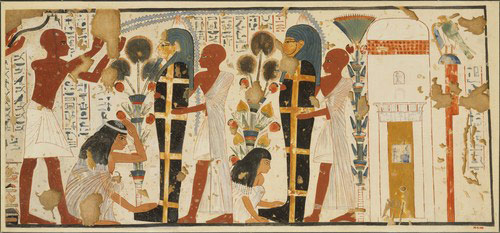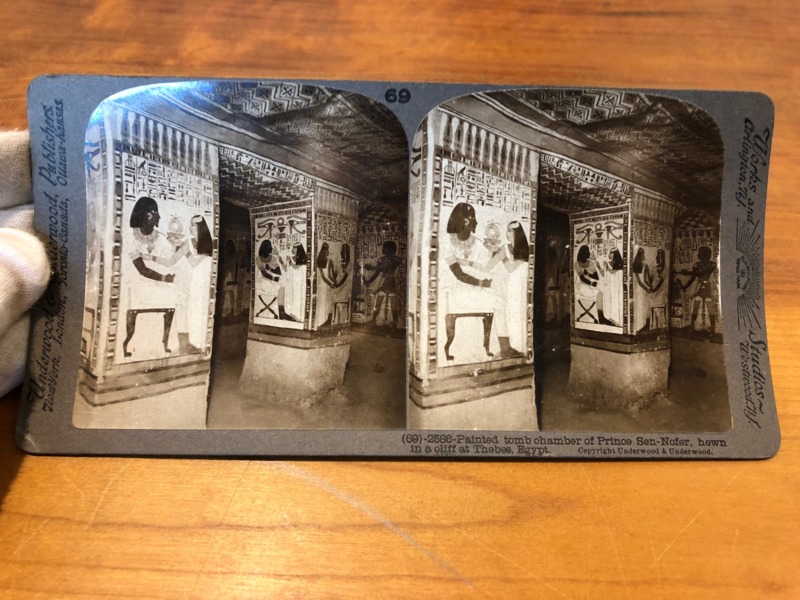Painted Tomb Stereograph
This is an artifact from an excavation and exploration of the Theban necropolis. This slide is a stereograph of the tomb of Sen-Nofer, also known as Sennefer, an Egyptian officer and mayor who lived around the sixteenth century B.C. Although this stereographic image was recorded in 1904, the tomb has been discovered since 1826.
The entrance to the tomb is described as a “mere hole” with debris scattered around and on top of the entering. Originally in Antiquity, there were upper rooms and a lower floor: the upper rooms for dining, celebrating, and commemorating then deceased loved one and the lower level was the place of the funerary burial chamber. Today, only the burial chamber is accessible, which is the image seen in the artifact. The commentator describes the tomb itself being full of color, surprised how long the paint has lasted, over 3,500 years. He constructs the tomb’s layout: a nearly square chamber with four tall pillars supporting the ceiling. The ceiling is decorated with a network patterns and “vine-tendrils” which originate from the Egyptian goddess Osiris. In this room the deceased would receive food and drink from the living. The paintings on the columns depict the prince, whose name is identified in the hieroglyphics, and his daughter giving offerings and food, signifying eternal receiving. The entire chamber room is a sequence of events that occur in the prince’s afterlife. To the Ancient Egyptians, it was important that knowledge about the dead was conveying in these mural paintings so the dead could have an understanding of their future lives.
Citatation: Sterescopic views of Egypt, MS 3724. Hargrett Rare Book and Manuscript Library, University of Georgia Libraries.

